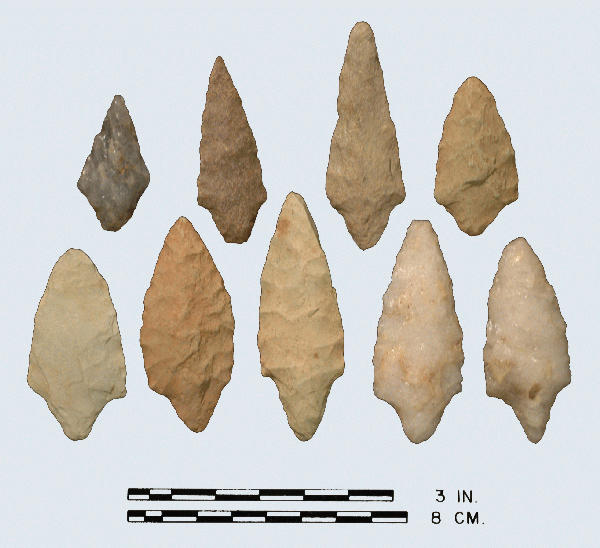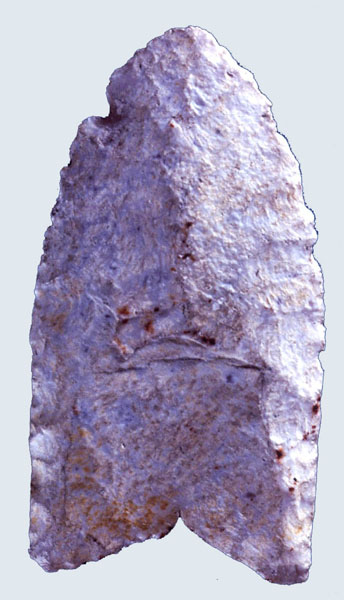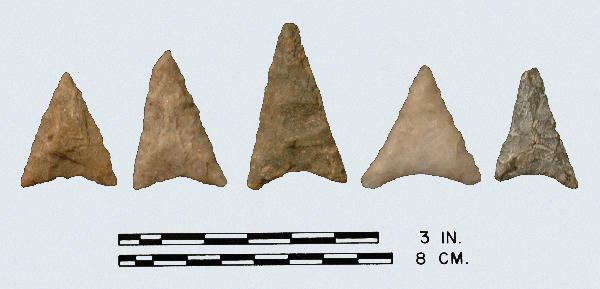
Morrow Mountain II: Top Row: quartz, quartzite, rhyolite, tuff; Bottom Row: tuff, tuff, tuff, quartz, quartz.
Type Tapering Middle-Archaic
Defining Attributes
The Morrow Mountain II point has a long, narrow blade with a long tapered stem.
Chronology
The Morrow Mountain II point dates to the Middle Archaic period, 4800 to 4200 BCE. Coe (1964) discusses the relationship between the Morrow Mountain I and Morrow Mountain II types at the Doerschuk Site in the Piedmont of North Carolina. The Morrow Mountain II type is likely a variation of the Morrow Mountain I; however the distribution of the Morrow Mountain II at the Doerschuk Site differs from that of the Morrow Mountain I. Coe notes that the presence of Morrow Mountain II points in later zones may have been the result of intrusive disturbances or it may indicate that this form was transitional and survived to a later date. Evidence from other sites in the area supports the latter interpretation. McAvoy (1997) suggests a time span of 4800 to 4200 BCE based on a radiocarbon date (4520+/-90 BCE) obtained from the Slade Site.
Description
- Blade: The blade is long and narrow with straight or slightly rounded sides. The relatively short blades on some examples appear to be the result of having been re-worked or re-sharpened.
- Base: The base is pointed and the stem is long and tapered. The shoulder and stem tend to curve together and there is a more definite break (angle) than is true for the Morrow Mountain I type.
- Size: Length ranges from 30 to 80 mm with an average of 60 mm. Width ranges from 18 to 30 mm with an average of 20 mm. Thickness ranges from 6 to 10 mm.
- Technique of manufacture: Similar to the Morrow Mountain I type, the larger points appear to be the result of direct percussion and smaller points were all finished by pressure flaking. Different from the Morrow Mountain I type, however, the Morrow Mountain II type shows no evidence of grinding or smoothing on the shoulders or stem.
Discussion
Morrow Mountain II points evolved from Morrow Mountain I points. The tapering stem tradition, introduced by the Morrow Mountain points, may or may not have fallen out of use, to be resurrected by the Cattle Run point type (1900-10000 BCE) in the Late Archaic period.
Defined in Literature
Coe (1964) originally defined this type based on points recovered from the Doerschuk Site in the Piedmont of North Carolina.
References




